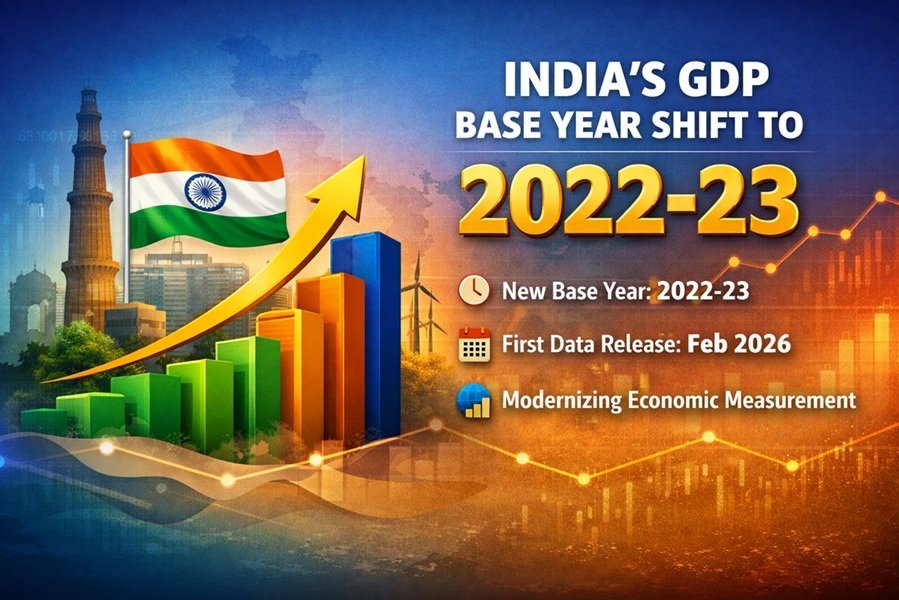
Understanding economic indicators is essential to evaluate the performance of countries and their economies. Two important measures used to compare economies are Nominal GDP and GDP based on Purchasing Power Parity (PPP). While both measure a country’s economic output, they differ in methodology and purpose. Let’s break them down in simple terms.
What is Nominal GDP?
Nominal GDP (Gross Domestic Product) measures the total value of all goods and services produced in a country within a specific period, typically a year. It is calculated using current market prices, without adjusting for inflation or cost-of-living differences.
Key Features of Nominal GDP:
- Current Prices: Uses market prices at the time of measurement.
- Currency Value: Expressed in the country’s currency or a common currency like the US dollar.
- No Adjustments: Does not account for inflation or differences in living costs between countries.
Example:
If a country produces 1,000 units of a product, each worth $10, its nominal GDP is $10,000.
Advantages of Nominal GDP:
- Provides a snapshot of the economy in monetary terms.
- Useful for comparing economic size over time within the same country.
Disadvantages of Nominal GDP:
- Can be misleading when comparing countries because it ignores cost-of-living differences.
- Inflation can distort the real economic growth.
What is PPP?
PPP (Purchasing Power Parity) is a method used to compare the economic productivity and living standards of countries. It adjusts GDP to reflect the cost of living and inflation rates in different countries, allowing for a fairer comparison.
Key Features of PPP:
- Standardized Basket of Goods: Compares what a specific amount of money can buy in different countries.
- Adjusts for Cost of Living: Accounts for price differences in goods and services.
- Global Comparisons: Makes GDP data more comparable across nations.
Example:
If a basket of goods costs $50 in the US but the same basket costs 500 rupees in India, and 1 dollar equals 10 rupees in PPP terms, then $1 can buy the same amount in both countries.
Advantages of PPP:
- Reflects real purchasing power, making cross-country comparisons more accurate.
- Highlights the relative living standards in different countries.
Disadvantages of PPP:
- Difficult to calculate due to variations in goods and services.
- May not account for quality differences in goods between countries.
Key Differences Between Nominal GDP and PPP
| Feature | Nominal GDP | PPP (Purchasing Power Parity) |
|---|---|---|
| Definition | Total economic output using current prices. | Adjusted GDP based on cost-of-living differences. |
| Currency | Expressed in the country’s own currency or USD. | Adjusted to reflect equivalent purchasing power. |
| Inflation Adjustment | No adjustment for inflation. | Adjusts for inflation and cost-of-living. |
| Comparison Use | Good for measuring economic size. | Better for comparing living standards. |
| Example | GDP in USD terms. | GDP adjusted to what USD can buy locally. |
Real-Life Examples
- United States:
- Nominal GDP (2025): ~$29 trillion
- GDP (PPP): ~$25 trillion (similar because prices in the US are used as the base for PPP calculations).
- India:
- Nominal GDP (2025): ~$4.2 trillion
- GDP (PPP): ~$15trillion (higher due to lower living costs in India).
- China:
- Nominal GDP (2025): ~$19.5 trillion
- GDP (PPP): ~$30 trillion (higher due to lower costs relative to developed nations).
Conclusion
While Nominal GDP provides a straightforward measure of economic output, PPP adjusts for cost-of-living differences, offering a more accurate picture of a country’s economic strength and living standards. Understanding both metrics is essential for evaluating and comparing economies globally. Each serves a unique purpose, so they should be used together to gain a fuller understanding of economic performance.






